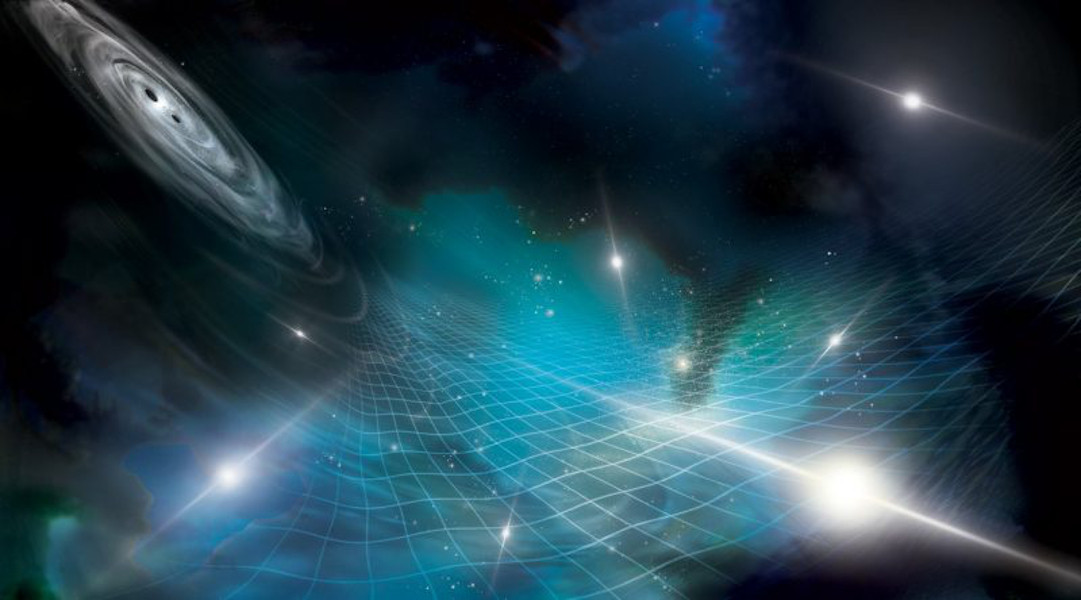
 Credit: Aurore Simonnet for the NANOGrav Collaboration
Credit: Aurore Simonnet for the NANOGrav Collaboration
Spacetime, Shaken and Stirred
Einstein showed us that space and time are woven together into a single, four dimensional fabric within which everything in the Universe exists, has existed and will exist. Einstein also showed that massive objects warp this fabric, similar to the way that rubber sheet is warped by placing a massive object on it. In this picture, the gravitational attraction of two objects is the natural motion of the objects as they move through warped spacetime. Accelerations of matter, according to Einstein's General Theory of Relativity, produce waves in this fabric, similar to the wake produced by a boat moving across a lake. These gravitaitional waves move through space at the speed of light, and were first detected on September 14, 2015 at 5:51 a.m. Eastern Daylight Time by the Laser Interferometric Gravitational Wave Observatory (LIGO). The gravitational waves detected by LIGO were produced by the merger of two large black holes, an event which took place about 1.3 billion years ago. But there are lots of types of matter moving through the Universe, all of which (including you) generate gravitational waves at some level. The combination of all this motion produces a gravitational wave background, like the whitecaps on the sea produced by the combined motions of the wind, ships and sea creatures. Now this gravitational wave background has been detected by NANOGrav, a scientic collaboration of researchers from more than 50 institutions in the U.S. and abroad. NANOGrav measures gravitational waves by carefully studying the pulse periods of an array of radio pulsars, rapidly rotating neutron stars that produce well-defined pulsations that can be monitored by radio telescopes. Pulsars are distributed throughout the Milky Way, thus serve as vast galactic network of very precise cosmic clocks, each rivaling atomic clocks in precision. The churning of spacetime produced by the gravitational wave background causes slight variations in the relative ticking of the "pulsar clocks" in the so-called "pulsar timing array". It's not clear what types of object or phenomena produce this spacetime noise, and while the data seem consistent with the mergers of supermassive black holes, even stranger phenomena in the Universal symphony of physics cannot yet be ruled out.
Published: July 3, 2023
<
HEA Dictionary ● Archive
● Search HEAPOW
● Other Languages
● HEAPOW on Facebook
● Download all Images
● Education ● HEAD
>

Each week the HEASARC
brings you new, exciting and beautiful images from X-ray and Gamma ray
astronomy. Check back each week and be sure to check out the HEAPOW archive!
Page Author: Dr. Michael F. Corcoran
Last modified Monday, 26-Feb-2024 17:35:32 EST


